Vienna, the capital of Austria, is a city steeped in history, culture, and music. As one of the most livable cities in the world, it offers a fantastic blend of imperial traditions and contemporary creativity.
One of the best ways to explore Vienna is by using its efficient, clean, and extensive public transport system. In this comprehensive guide, I will provide you with all the information you need to navigate Vienna’s public transport like a pro.
Introduction to Vienna’s Public Transport System
Vienna’s public transport system, operated by Wiener Linien, includes an extensive network of buses, trams, and trains (U-Bahn and S-Bahn). The city is well-connected, and public transport is one of the most convenient and economical ways to get around. The system is known for its punctuality, safety, and cleanliness, making it a favorite among both locals and tourists.
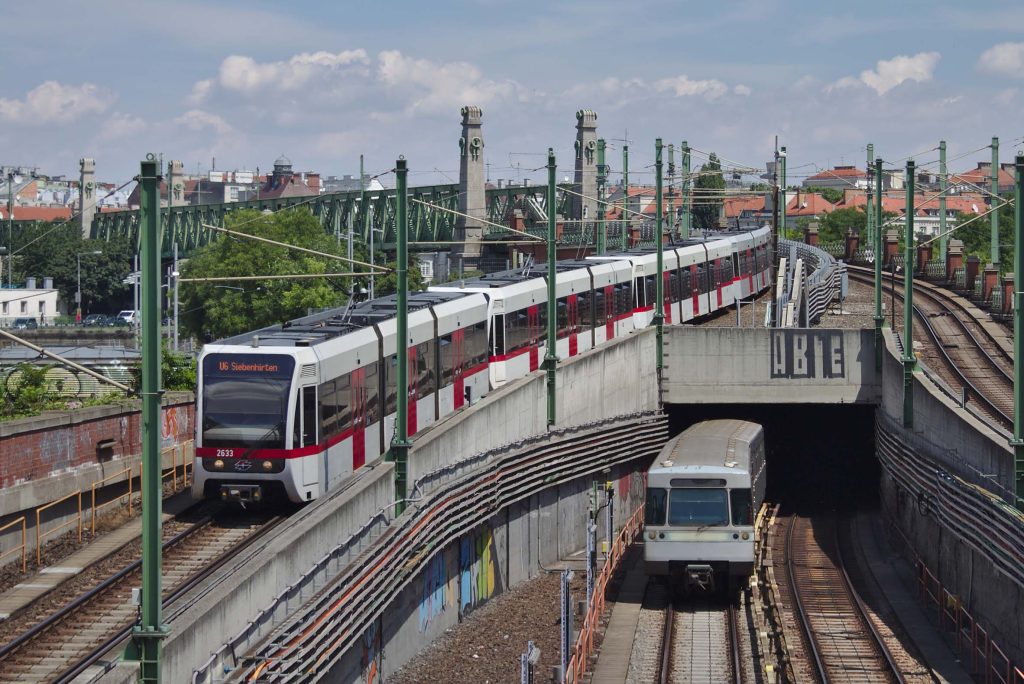
Key Components of the System
- U-Bahn (Subway): The U-Bahn has five lines (U1, U2, U3, U4, U6) and covers most of the city. It’s the fastest mode of transport for long distances within Vienna.
- S-Bahn (Suburban Trains): The S-Bahn network connects Vienna with its suburbs and other nearby cities. It is particularly useful for reaching the outer districts and the airport.
- Trams: Vienna’s tram network is one of the largest in the world, with over 30 lines. Trams are perfect for shorter trips and offer scenic routes through the city.
- Buses: Buses complement the U-Bahn and tram services, covering areas that are not accessible by other means.
- Night Buses: After the U-Bahn and trams stop running around midnight, night buses take over, ensuring you can get around the city at any hour.
Tickets and Pricing
Vienna’s public transport operates on a proof-of-payment system, meaning you must have a valid ticket before boarding. Tickets are available at ticket machines, online, or via mobile apps. Here’s a breakdown of the most common ticket options:
- Single Ticket: Costs €2.40 and is valid for one journey in one direction, including transfers.
- 24-Hour Ticket: Costs €8.00 and is valid for unlimited travel on all forms of public transport for 24 hours.
- 48-Hour Ticket: Costs €14.10 and is valid for 48 hours.
- 72-Hour Ticket: Costs €17.10 and is valid for 72 hours.
- Weekly Pass: Costs €17.10 and is valid from Monday to Sunday.
- Monthly Pass: Costs €51.00 and is valid for a calendar month.
- Vienna Card: Costs €17.00 for 24 hours, €25.00 for 48 hours, or €29.00 for 72 hours and includes unlimited travel on public transport as well as discounts at museums, shops, and restaurants.
Tickets must be validated before the start of your journey. U-Bahn stations have validation machines at the entrances, while trams and buses have them onboard.
Using the U-Bahn Like a Pro
The U-Bahn is the backbone of Vienna’s public transport system. Here’s how to make the most of it:
Understanding the Lines
- U1 (Red Line): Runs from Leopoldau in the north to Oberlaa in the south. Key stops include Stephansplatz (city center), Karlsplatz (cultural attractions), and Praterstern (Prater amusement park).
- U2 (Purple Line): Runs from Karlsplatz to Seestadt. Key stops include Museumsquartier, Rathaus, and the stadium.
- U3 (Orange Line): Runs from Ottakring to Simmering. Key stops include Westbahnhof (main train station), Stephansplatz, and Landstraße.
- U4 (Green Line): Runs from Hütteldorf to Heiligenstadt. Key stops include Schönbrunn (palace) and Karlsplatz.
- U6 (Brown Line): Runs from Siebenhirten to Floridsdorf. Key stops include Westbahnhof and Gumpendorfer Straße.
Tips for Using the U-Bahn
- Download a Map: Having a map of the U-Bahn network is crucial. You can download it from the Wiener Linien website or get a physical copy at tourist information centers.
- Check Timetables: U-Bahn trains run every 2-5 minutes during peak hours and every 7-10 minutes during off-peak times. The last trains usually depart around midnight.
- Use Real-Time Apps: Apps like WienMobil and Qando provide real-time information on train schedules, routes, and any service disruptions.
- Avoid Rush Hour: If possible, avoid traveling during peak hours (7-9 AM and 5-7 PM) to ensure a more comfortable journey.
- Mind the Gap: When boarding and alighting the train, be mindful of the gap between the train and the platform.
Mastering the S-Bahn
The S-Bahn is essential for reaching the outer districts, suburbs, and Vienna International Airport (Flughafen Wien).
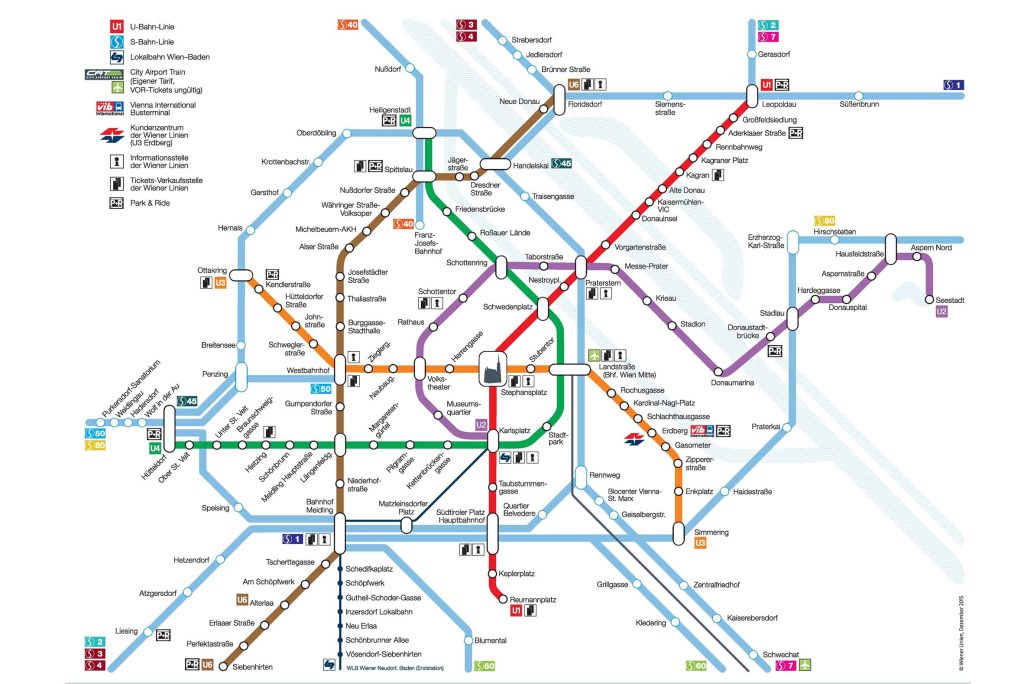
Key Lines and Routes
- S1, S2, S3: These lines run through the city and into the suburbs, providing access to many residential areas and business districts.
- S7: This line connects the city center (Wien Mitte) with the airport. It’s the most economical way to travel to and from the airport, with a one-way ticket costing €4.30.
- S45: Known as the “Vorortelinie,” this line connects the western and northern districts.
Tips for Using the S-Bahn
- Plan Your Route: Use the ÖBB website or app to plan your journey, especially if you’re traveling to the suburbs or outside Vienna.
- Airport Travel: For airport transfers, the S7 is a convenient and cost-effective option. Trains run every 30 minutes and take about 25 minutes from Wien Mitte to the airport.
- Validate Your Ticket: Remember to validate your ticket before boarding. Validation machines are available at all S-Bahn stations.
- Mind the Zones: Unlike the U-Bahn, the S-Bahn crosses different fare zones. Ensure your ticket covers all zones you will travel through.
Navigating the Tram Network
Vienna’s trams are a scenic and efficient way to travel, especially for shorter distances within the city.
Popular Tram Lines
- Tram 1 and Tram 2: These lines circle the Ringstraße, providing access to many of Vienna’s historic sites such as the State Opera, Hofburg Palace, and City Hall.
- Tram D: Runs from Nussdorf in the north to Hauptbahnhof in the south, passing major attractions like Belvedere Palace and the University of Vienna.
- Tram 71: Connects the central district with the Zentralfriedhof (Central Cemetery), where notable figures like Beethoven and Strauss are buried.
Tips for Using Trams
- Enjoy the Views: Trams offer some of the best views of Vienna’s architecture and landmarks. Sit by the window and enjoy the ride.
- Hop On, Hop Off: Trams are great for spontaneous exploration. Hop on and off at different stops to discover new areas.
- Late-Night Travel: Trams run until around midnight. After that, night buses take over the routes.
- Accessibility: Most trams are wheelchair accessible and have designated spaces for strollers and bicycles.
Making the Most of Buses
Buses fill in the gaps where the U-Bahn and trams don’t reach, providing comprehensive coverage of the city.
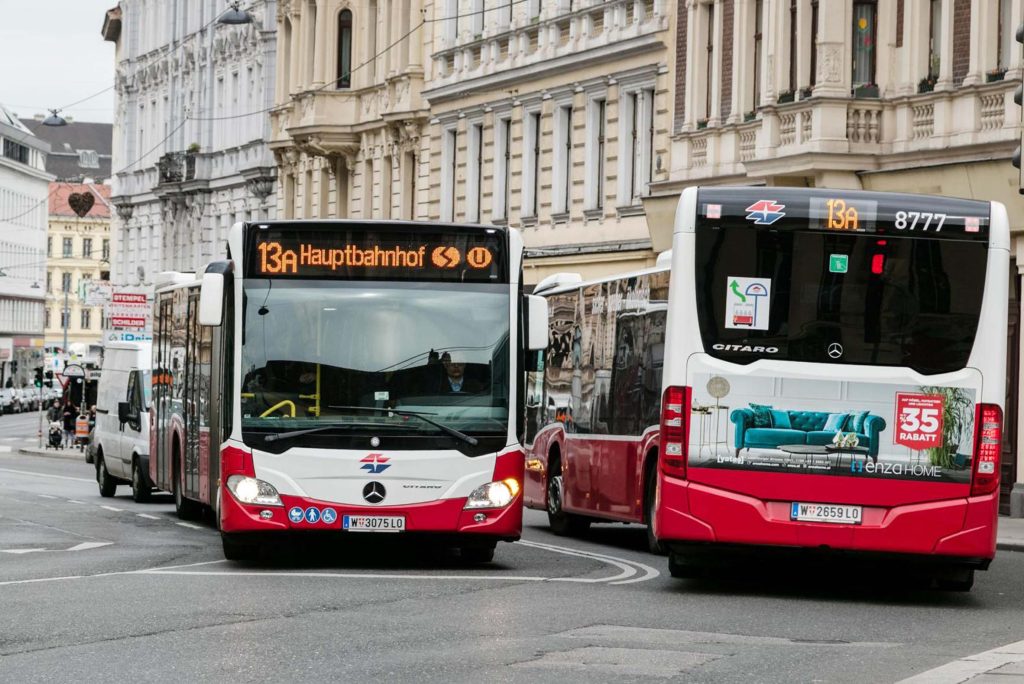
Key Bus Routes
- Bus 13A: Runs from Hauptbahnhof to Alser Straße, passing through the popular Mariahilfer Straße shopping district.
- Bus 1A, 2A, 3A: These lines serve the inner city, connecting major tourist attractions and shopping areas.
- Night Buses: Identified by an “N” before the number (e.g., N25), these buses run from midnight to 5 AM, ensuring 24-hour public transport coverage.
Tips for Using Buses
- Real-Time Updates: Use the WienMobil app for real-time bus schedules and route information.
- Staying Safe: Vienna’s buses are safe, but it’s always wise to stay aware of your surroundings, especially late at night.
- Exact Change: If buying a ticket from the driver, have the exact change ready. It’s more convenient to purchase tickets beforehand.
Buying Tickets and Passes
Vienna offers various ticket options to suit different travel needs.
Where to Buy
- Ticket Machines: Available at all U-Bahn stations and some tram and bus stops. Machines accept cash and cards.
- Online: Purchase tickets through the Wiener Linien website or the WienMobil app.
- Ticket Offices: Located at major transport hubs like Hauptbahnhof and Westbahnhof.
- Tabak Shops: Many newsstands and convenience stores sell public transport tickets.
Types of Tickets
- Single Tickets: Best for occasional travel. Valid for one journey, including transfers.
- Day Passes: Ideal for tourists who plan to use public transport multiple times a day.
- Weekly/Monthly Passes: Cost-effective for longer stays or frequent travel.
- Vienna Card: Offers unlimited travel and discounts on various attractions.
Accessibility and Safety
Vienna’s public transport system is designed to be accessible and safe for all users.
Accessibility Features
- Elevators and Escalators: Available at most U-Bahn stations for easy access.
- Low-Floor Trams and Buses: Ensure easy boarding for wheelchair users and strollers.
- Audio and Visual Announcements: Provide information on stops and routes, assisting visually and hearing-impaired passengers.
Safety Tips
- Stay Alert: Keep an eye on your belongings, especially in crowded areas.
- Emergency Buttons: Located in all trains, trams, and buses for immediate assistance.
- Police Presence: Uniformed and plainclothes officers patrol the public transport system, enhancing security.
Exploring Vienna with Public Transport
Vienna’s public transport makes it easy to explore the city’s diverse neighborhoods and attractions.
Key Destinations
- Stephansplatz: The heart of Vienna, home to St. Stephen’s Cathedral. Accessible via U1 and U3.
- Schönbrunn Palace: A UNESCO World Heritage site, reachable by U4.
- Belvedere Palace: Famous for its art collection, including works by Klimt. Accessible via tram D and S-Bahn.
- Prater: An amusement park with the iconic Ferris wheel, accessible via U1.
- MuseumsQuartier: A cultural complex with numerous museums, accessible via U2.
Day Trips
- Wachau Valley: A scenic wine region along the Danube, reachable by train from Westbahnhof.
- Bratislava: The capital of Slovakia, just an hour away by train from Wien Hauptbahnhof.
Navigating Vienna’s public transport system like a pro is all about understanding the different modes of transport, knowing where and how to buy tickets, and being aware of the best routes and schedules.
With its efficient and well-connected network, Vienna makes it easy to explore every corner of the city. Whether you’re a first-time visitor or a seasoned traveler, mastering Vienna’s public transport will enhance your experience and help you make the most of your time in this beautiful city.
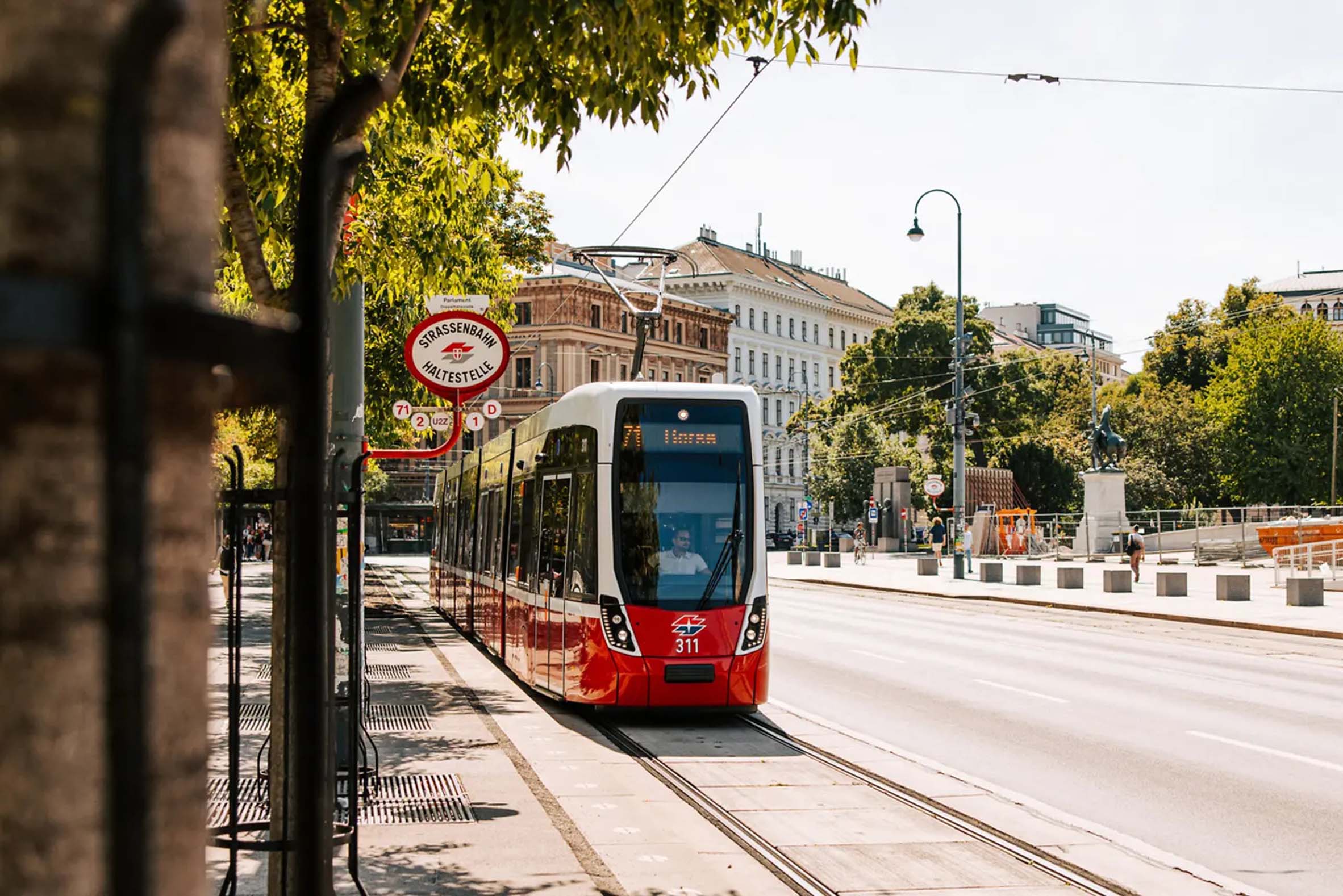
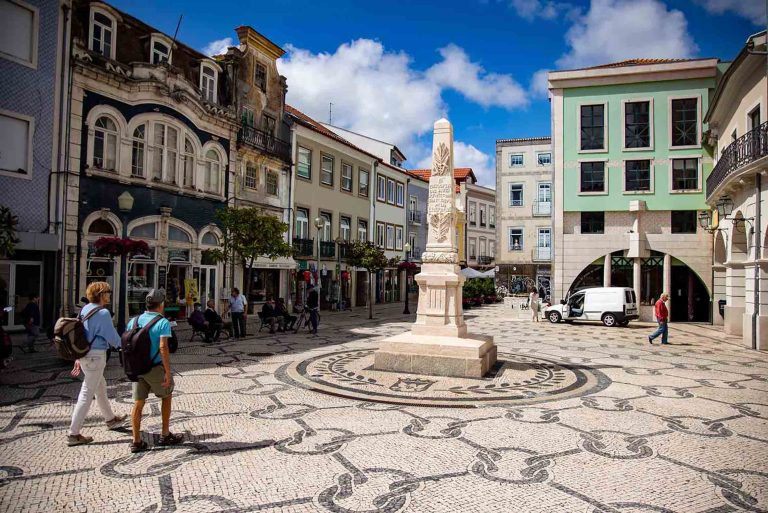

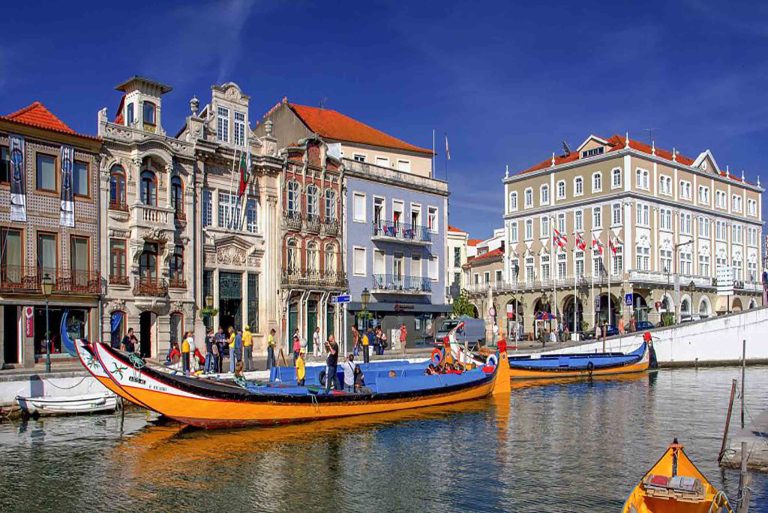
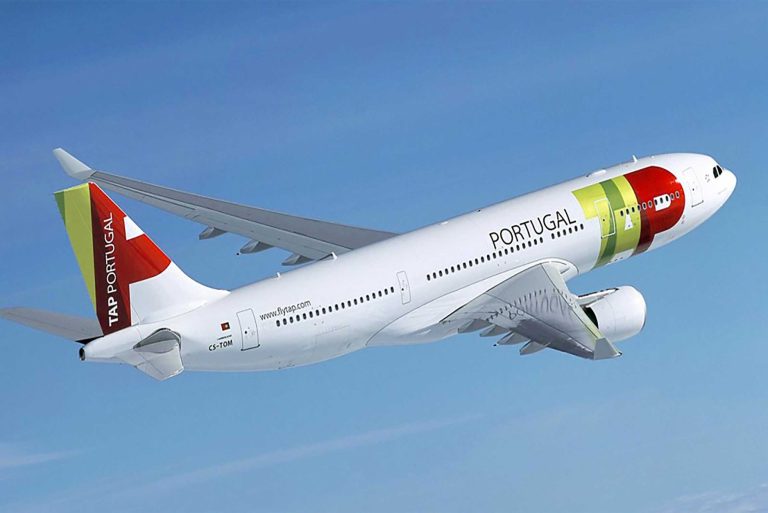


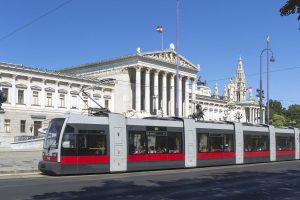
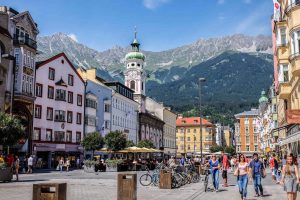


+ There are no comments
Add yours